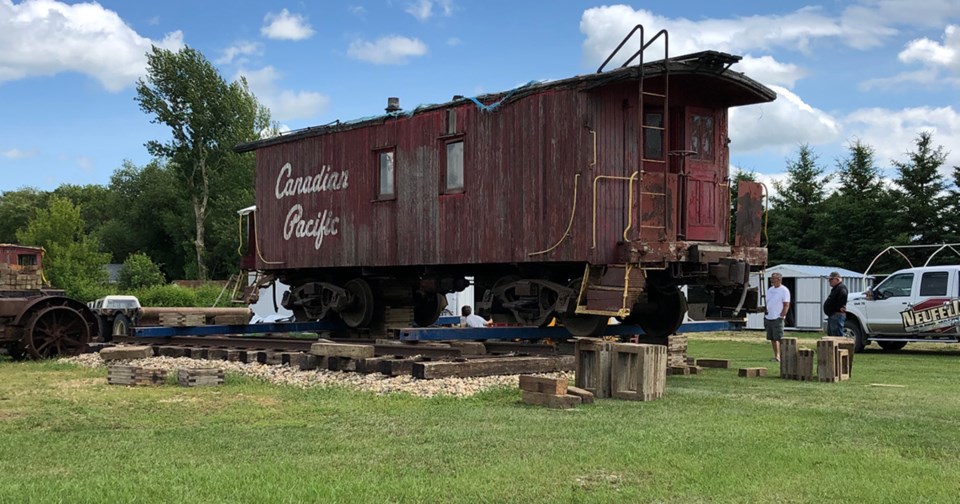MELFORT — After two years of work, the Melfort and District Museum has a 1912 Canadian Pacific Railway caboose to display.
“We finally brought it to fruition, so that’s great,” said Gailmarie Anderson, curator and cultural co-ordinator with the Melfort and District Museum.
The long process to display the caboose was largely their share of the costs of getting the exhibit to the museum and getting it unloaded.
“That was pretty steep but that was our part of the bargain,” Anderson said. “It was costly, but the WDM [Western Development Museum] and the Melfort Museum shared the cost.”
She said this exhibit is an asset to the museum and to the development of the history of Melfort.
“Melfort was actually developed because of the railway. The Stoney Creek Settlement was south of Melfort, and then in 1903 when the rail came through the community basically moved to this location – because there was a lot of rail traffic going north, south, east and west for years.”
While in operation, the route the 1912 caboose took was typically Prince Albert to Nipawin. After it stopped going on routes, it became a yard caboose in Prince Albert. This was until the early ’70s, when it was transferred to the WDM in North Battleford. After which, it was transferred to the WDM in Saskatoon.
Now Melfort houses it after it being donated to the museum.
The next step for the caboose is the restoration process. To restore its quality, the restoration process uses the same materials that it was originally made out of, so it doesn’t just look the same, but is the same.
“It’s in pretty good shape; the roof definitely needs some work, as does the inside,” Anderson said. “We’re going to put the cupola inside our all-season shop over the winter and work on restoring it. It needs new windows, that kind of thing. We’re going to tarp the actual caboose for the winter and get at it next spring. But it will take a lot of work and probably a lot of money.”
This process can take up to two years.
“You have to use the right wood, acquire the right paint, use the right logo; you have to put the roof properly together – probably wooden tar.”
The caboose is on display east of the power house on the museum grounds.



